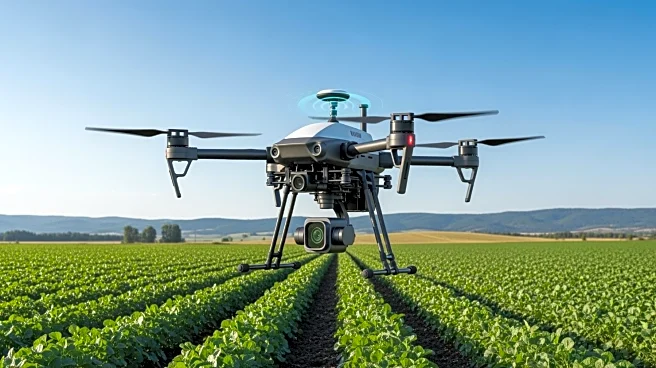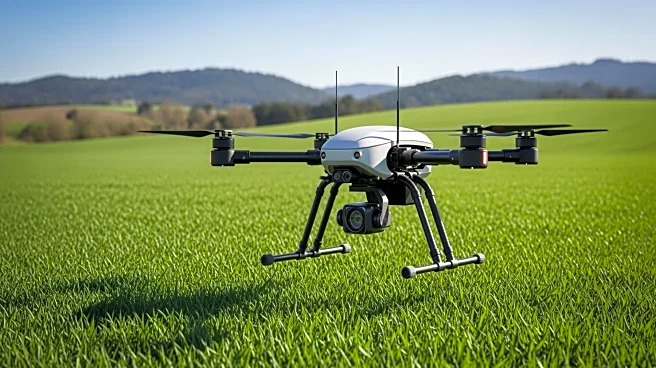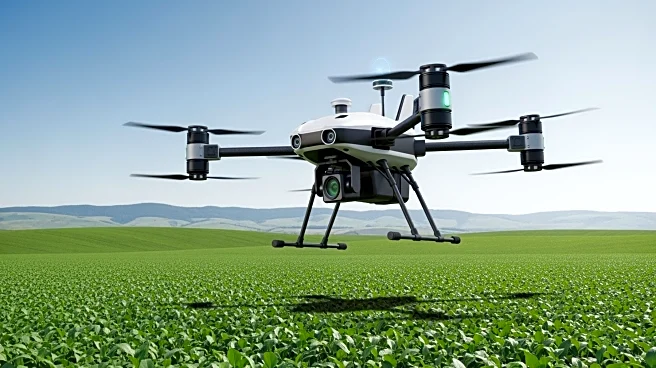What's Happening?
The South Asia Agriculture Equipment Market is undergoing significant growth, driven by a shift from traditional farming practices to modern, technology-driven agricultural operations. Valued at $7.2 billion
in 2025, the market is projected to reach $12.7 billion by 2032, with a compound annual growth rate (CAGR) of 8.4%. This growth is fueled by increased mechanization, government subsidies for farm machinery, and the need to enhance productivity amid declining agricultural labor availability. Countries such as India, Bangladesh, Pakistan, Sri Lanka, and Nepal are experiencing a transformation in agriculture, with a focus on farm efficiency, precision agriculture, and sustainable practices. Tractors, harvesters, tillers, irrigation systems, and smart farm technologies are in high demand, with India holding the largest market share due to its vast cultivable land and strong government policy support.
Why It's Important?
The expansion of the agriculture equipment market in South Asia is crucial for addressing labor shortages and improving farm productivity. As younger populations migrate to urban areas, agriculture faces a scarcity of skilled labor, making mechanization essential for maintaining productivity. Government policies offering subsidies and financial incentives are encouraging the adoption of farm machinery, which is vital for small and medium-scale farmers. The integration of precision agriculture technologies, IoT-enabled machinery, and AI-driven farm management systems is modernizing the agricultural landscape, enhancing food security, and boosting export potential. This shift towards mechanization and smart farming practices is expected to improve crop quality and reduce post-harvest losses, contributing to sustainable farming and economic growth in the region.
What's Next?
The market is poised for further growth with the emergence of smart and connected farm machinery, reshaping resource management and yield optimization. IoT-enabled sensors, GPS-guided tractors, and automated irrigation systems are expected to gain acceptance as precision agriculture adoption increases. Leasing and rental services for machinery are expanding, allowing small farmers to access high-end equipment without ownership burdens. The focus on climate-smart agriculture and sustainable mechanization presents long-term growth opportunities, with manufacturers investing in low-emission, energy-efficient machinery. As governments strengthen environmental regulations, the demand for renewable energy-powered equipment is likely to rise, further propelling market growth.
Beyond the Headlines
The transition to smart farming in South Asia has deeper implications for rural development and environmental sustainability. The adoption of advanced machinery and precision agriculture tools can lead to improved water use efficiency, reduced chemical inputs, and enhanced soil health. This shift not only addresses labor shortages but also contributes to climate resilience and sustainable resource management. The collaboration between governments, private sectors, and international organizations is crucial for overcoming challenges such as high equipment costs and limited access to financing. As digital adoption increases, farmers will need training and support to effectively utilize smart farming technologies, ensuring long-term benefits for the agricultural sector.











